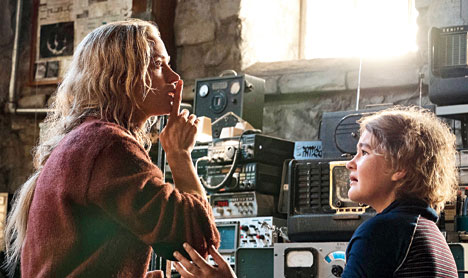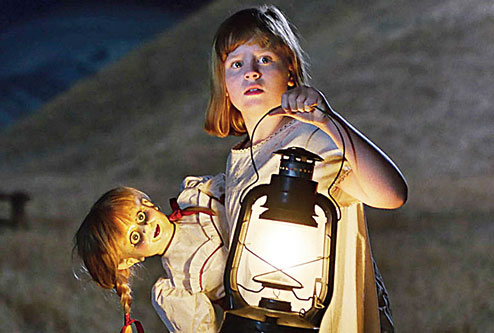The scares are plentiful and sometimes ticklishly funny in The Curse of La Llorona, an enjoyably old-fashioned ghost story. It’s the latest instalment in a rapidly expanding horror series that started with The Conjuring (2013) and now includes the Annabelle flicks (about a devil doll) and The Nun (a demon nun). The connective tissue among these titles can be very thin; here, the most obvious link is Father Perez (Tony Amendola), who’s on hand again to explain that, why, yes, evil exists — boo!
Like the others in the series, this one largely takes place in the not-too-distant past, which lends a little atmospheric exoticism to the tale. (Also: no handy smartphones for emergencies.) The main story unfolds in a smog-wreathed Los Angeles in 1973 — cue the flare jeans and Curtis Mayfield. Anna (Linda Cardellini), a widow with two kids, works in social services. She’s still mourning for her husband while trying to keep her family together and do her job. This includes investigating some serious weirdness at the Alvarez home, where the wild-eyed mother (Patricia Velasquez) has locked her sons in a closet decorated with eerie markings.
As the title announces, there’s a curse hanging over this story, one that soon bedevils Anna, forcing her to deal with weirdness closer to home. She discovers that whatever haunted the Alvarezes has invaded her life and is threatening her children, Chris (Roman Christou) and Sam (Jaynee-Lynne Kinchen). That threat has a name, La Llorona (Marisol Ramirez), a weeping woman in white with an ugly past and insatiable malevolence. Plucked from Mexican folklore (and beyond), this jealous Medea-like figure, whose love turns into consuming hate, has echoed through the ages. She never gets old and she also doesn’t get more interesting, as this movie reminds you.
More efficient than ambitious, La Llorona is basically a maternal showdown with shock cuts and billowing curtains. The director Michael Chaves, making the most of his silkily mobile, at times predatory camera (he likes to shift the point of view mid-prowl) delivers the horror classics nicely. Every floorboard and door in Anna’s sprawling house seems to get a solo, with squeaks that become shrieks. By the time La Llorona is a regular visitor, Anna’s house has become a haunted world unto itself, each room — bathroom, attic, basement — a stage, complete with a flamboyant entrance and exit.
Movies that turn on violence against children can swerve into uncomfortable terrain because kids are such obvious prey but also because the off-screen world is filled with so many real horror stories. There are a few moments, especially in scenes of near-drowning, when Chaves embraces the spectacle of child endangerment a little too lustily. For the most part, though, the movie avoids unmotivated sadism. Like the better titles in this series, it leans on primal fears — the unknown, the certainty of death — and solid actors who can deliver the silliness straight. Even better is how it explores and exploits the divide between comedy and horror.
Again and again in La Llorona, Chaves creates setups that are so obvious that you giggle, only to turn the dial a bit — and amp the creepiness — so your laughter abruptly cuts out. (The script is by Mikki Daughtry and Tobias Iaconis.) Much like the prowling camera and the editing that smacks you around, this intentionally unstable tone adds to the spookiness as do the syncopated performances. Anna and her children may spend much of the story in near-hell but when a stern shaman (the excellent Raymond Cruz) delivers the phrase “ta-da,” he and this movie show you a little bit of horror heaven.












